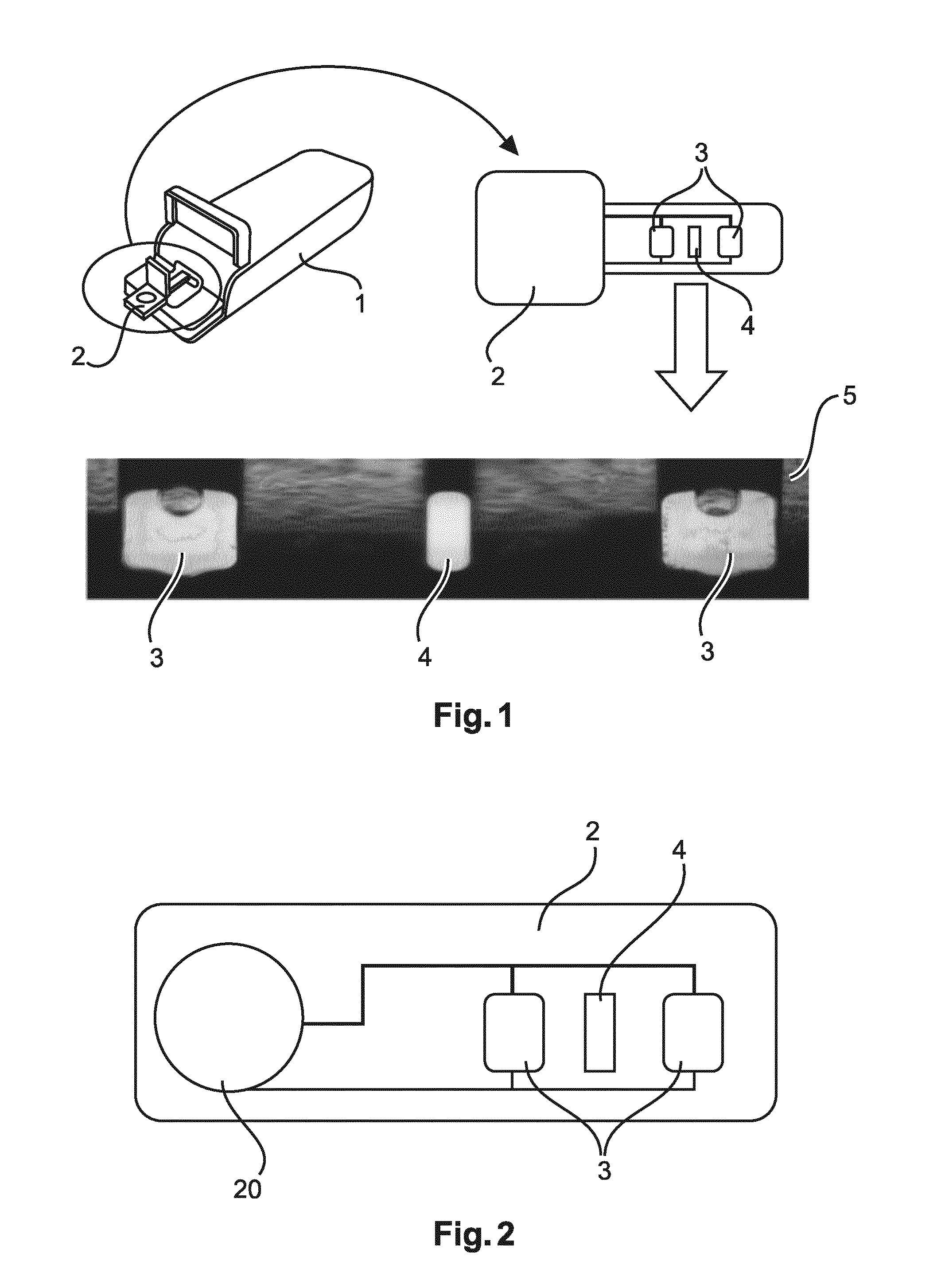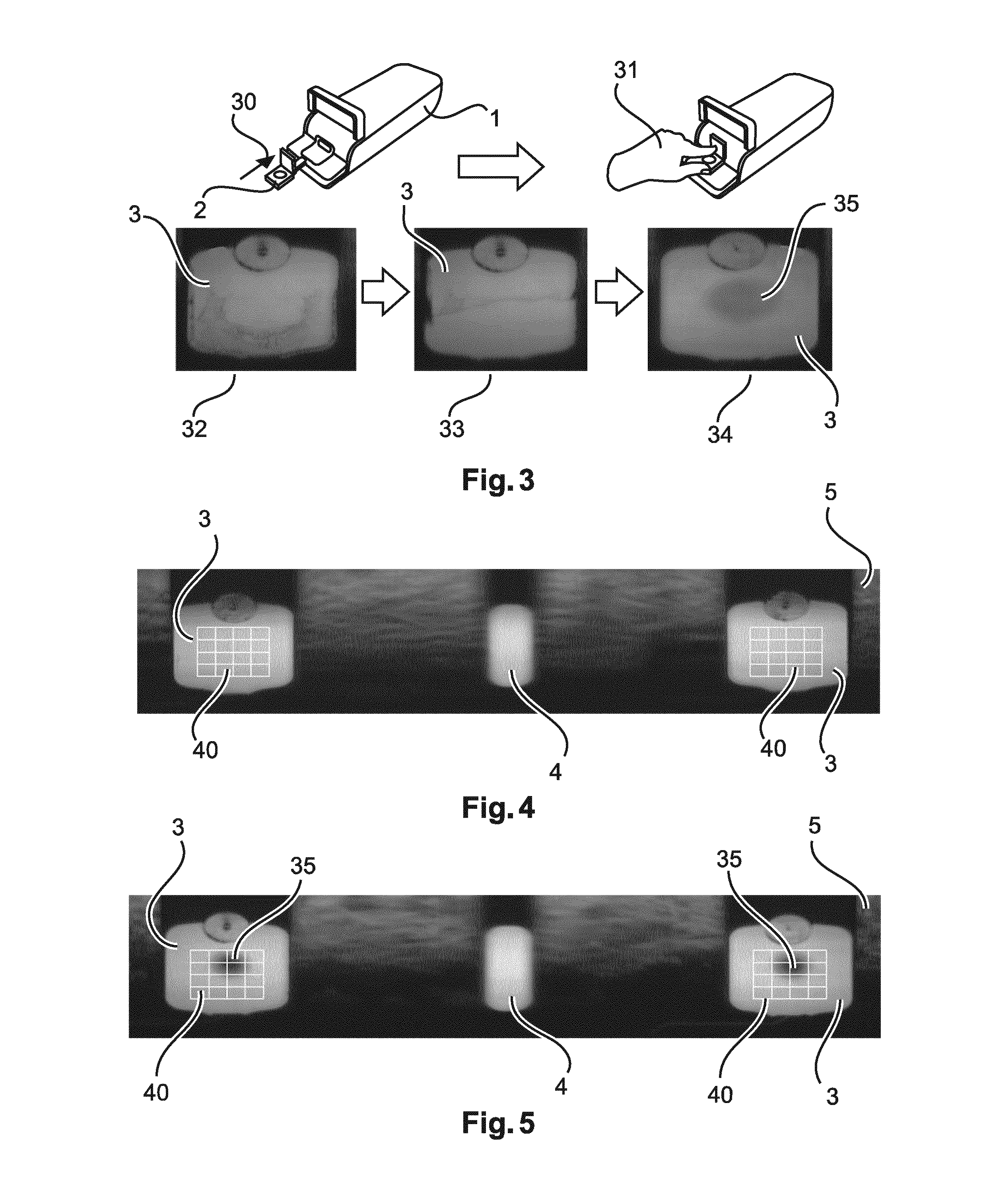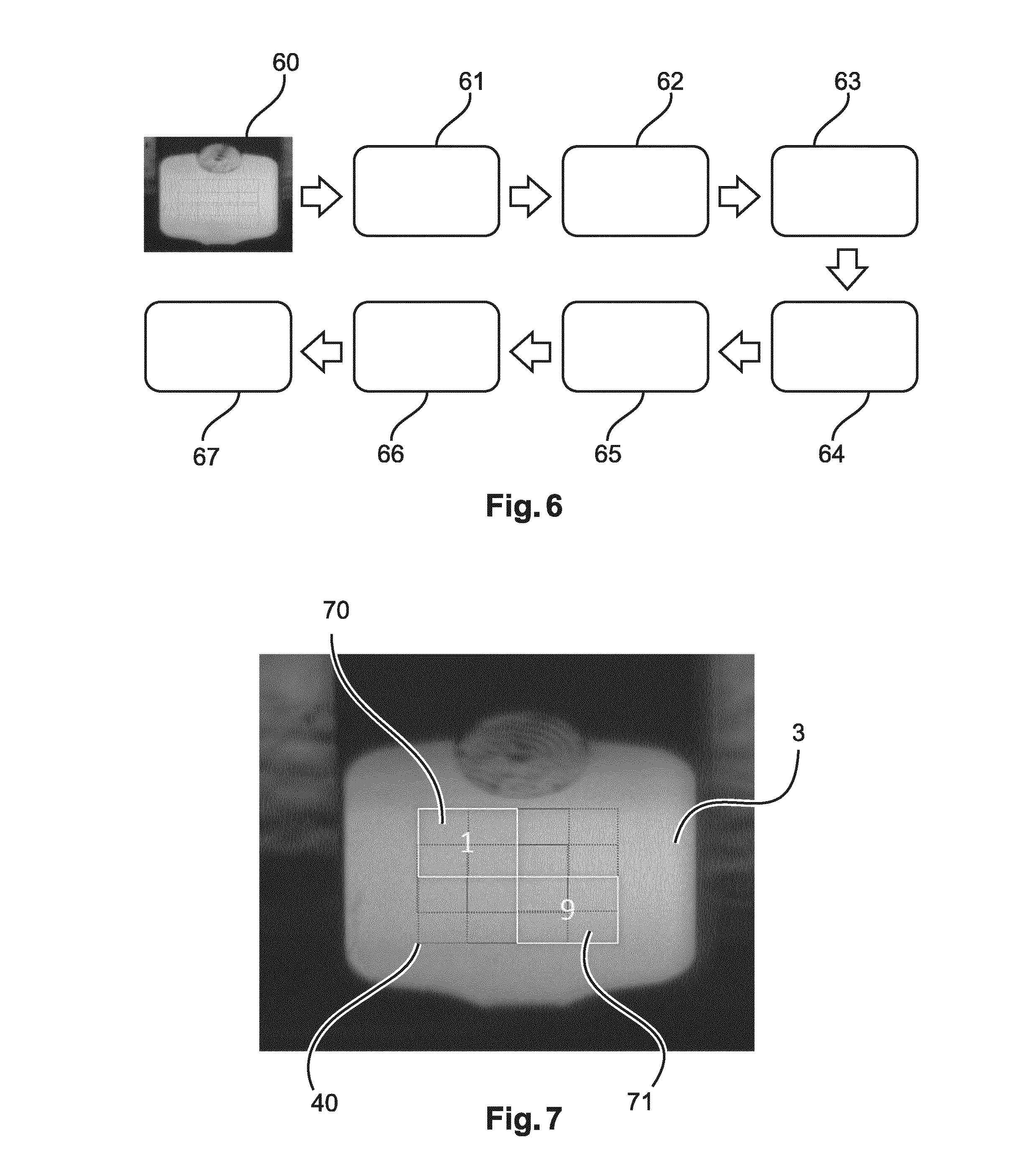Wetting detection without markers
a technology of markers and assays, applied in the direction of phase-affecting property measurements, instruments, measurement devices, etc., can solve the problem of dark stain in the ftir image, and achieve the effect of accurate detection of this feature and fast and reliable determination of assay start points
- Summary
- Abstract
- Description
- Claims
- Application Information
AI Technical Summary
Benefits of technology
Problems solved by technology
Method used
Image
Examples
example 1
Region Definition
[0120]The regions for blob detection were defined in a grid of 3×3 regions per chamber. Each region overlaps its neighboring regions by 50%. The grid of regions had a distance of 33 px to the sides of the chamber, and 15 px to the bottom of the chamber and 8 px from the pinning.
[0121]The regions were positioned such that the variations in location of the blob due to analyzer orientation are covered, while maintaining enough distance to the edges of the chambers to remain robust against cartridge movement. The size of the regions was adjusted to the typical size of the black blob. Overlapping of the regions was set to 50% so that minimal disturbance of the signal occurs when switching to a different region due to a moving blob.
IdXYWidthHeightC1.W1−548−327040C1.W2−513−327040C1.W3−478−327040C1.W4−548−107040C1.W5−513−107040C1.W6−478−107040C1.W7−548127040C1.W8−513127040C1.W9−478127040C2.W1407−327040C2.W2442−327040C2.W3477−327040C2.W4407−107040C2.W5442−107040C2.W6477−1070...
example 2
Algorithm Specification
[0123]For blob detection a blob detection algorithm was used, which is composed of a number of steps which were executed in sequence. Each step adds additional robustness and specificity to the algorithm so that wetting can be reliably detected. The steps are clarified by using the signal of a random, noisy experiment as example. FIG. 8 illustrates this signal, which is the result of getting the average signal for each region of a chamber with a region definition specified in Example 1. Typically, the processing is done in real time while the black blob occurs, so only the part of the signal until detection may be available.
example 3
Removal of Spike-Noise
[0124]As a first step, for each region the spikes / noise caused by movement of the cartridge was filtered out by using a median filter of width 101. This filter suppresses all high-frequency changes in the region signal without impacting the signal strength of the remaining signal. The result of this removal step is illustrated in FIG. 9, which shows smoothed version of the signal curves as shown in FIG. 8.
PUM
| Property | Measurement | Unit |
|---|---|---|
| size | aaaaa | aaaaa |
| size | aaaaa | aaaaa |
| size | aaaaa | aaaaa |
Abstract
Description
Claims
Application Information
 Login to View More
Login to View More - R&D
- Intellectual Property
- Life Sciences
- Materials
- Tech Scout
- Unparalleled Data Quality
- Higher Quality Content
- 60% Fewer Hallucinations
Browse by: Latest US Patents, China's latest patents, Technical Efficacy Thesaurus, Application Domain, Technology Topic, Popular Technical Reports.
© 2025 PatSnap. All rights reserved.Legal|Privacy policy|Modern Slavery Act Transparency Statement|Sitemap|About US| Contact US: help@patsnap.com



